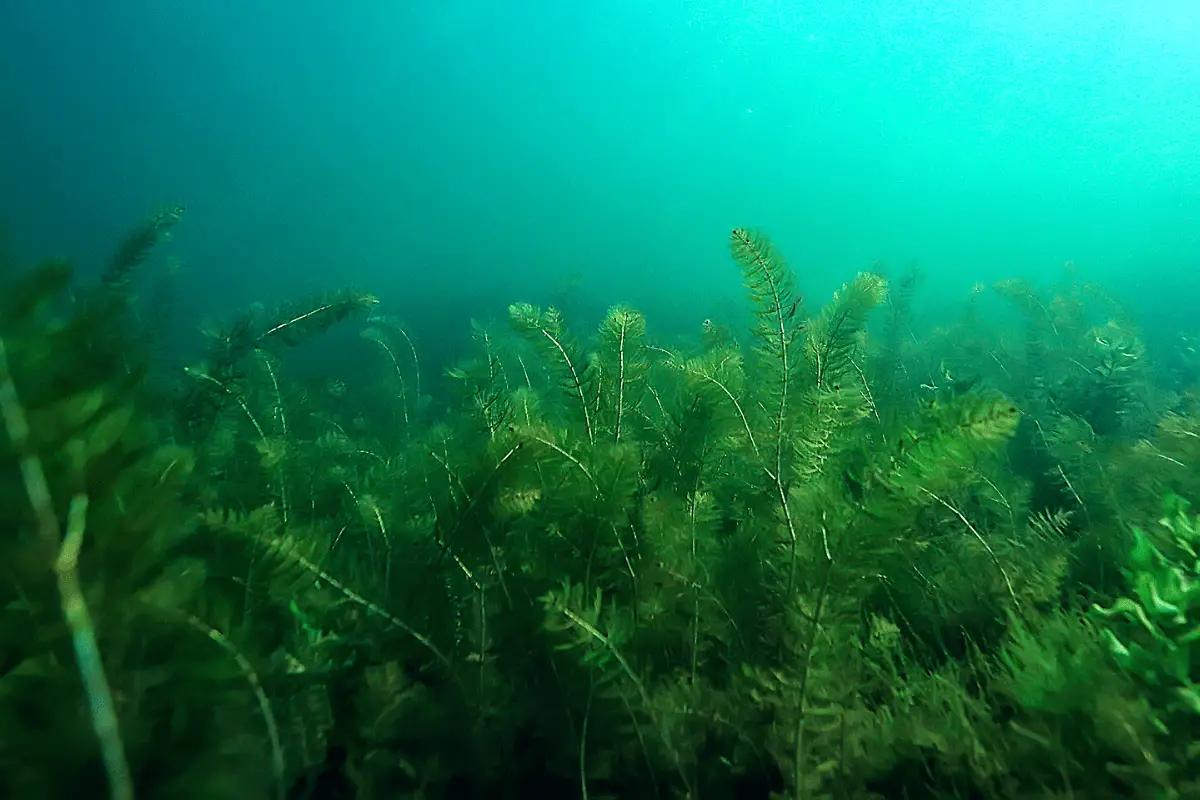Working thick aquatic vegetation can be a challenge. The bass have lots of places to hide, the lures can get hung up quickly and it is confusing to know where to start.
To work thick vegetation efficiently for bass, anglers can use a variety of lures like heavy Texas rigged plastics, a soft jerkbait and a jig. Look for areas that offer something different. Find small holes in the vegetation, a hard bottom, or even an area that forms a point. Also keep looking for vegetation that has deep water access and you will find the bass.
In this article, I will cover how to efficiently target the vegetation on your home lake so you can locate and catch those summer bass.
Bass Love the Grass
It is no surprise that bass, especially largemouth, seek out and live in thick clumps of summer vegetation.
A healthy grass bed offers excellent oxygen levels, plenty of hiding places, and loads of potential prey to feed on. If your home lake or river has grass in it you can bet there will be bass somewhere in the maze of vegetation.
What to Look For to Narrow Down the Search
Endless expanses of grass beds can overwhelm even a seasoned angler.
The first thing I think about is the barometric pressure. If it is a sunny day with little wind, odds are those bass are going to be sitting on the bottom structure at the lowest points in those grass beds.
If there is some chop of the water and the sunlight isn’t so intense, the bass that are actively feeding will be up in the water column and cruising through the vegetation seeking out an easy meal.
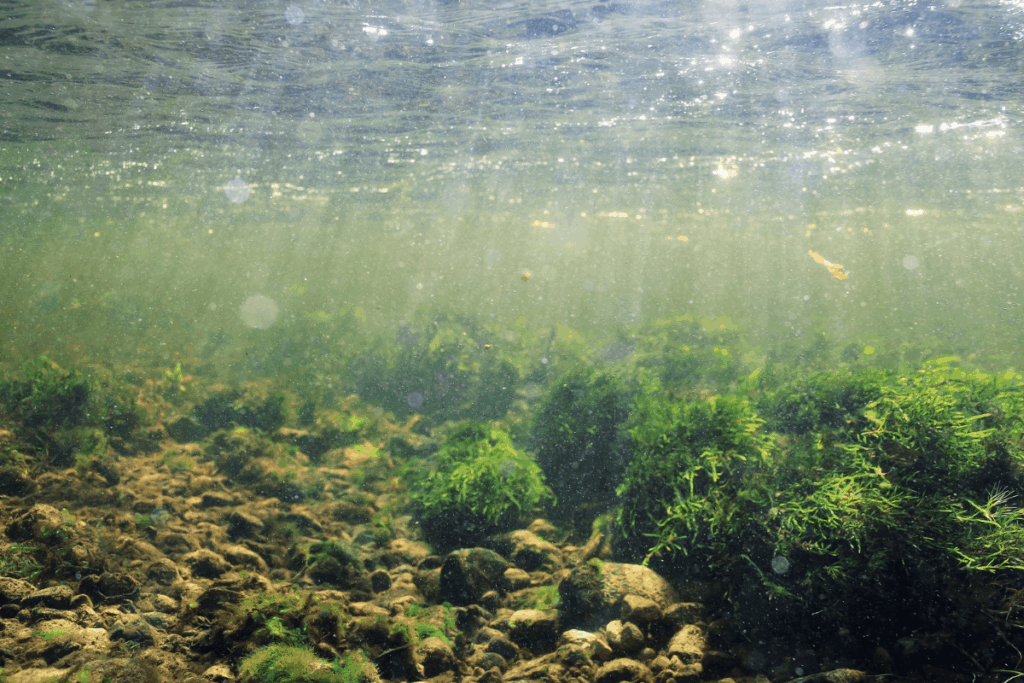
Locating Something Different in the Vegetation to Pinpoint Bass
One of the major factors to consider when breaking down huge grass beds is the subtle differences.
Are there little pockets? Is there a distinct inner and outer weedline? Is there a spot in the weeds that makes a small point or pocket? Can you find some rock mixed in with that vegetation?
Predators love edges.
It allows the bass to stay hidden yet prowl for unsuspecting prey. All of these above-mentioned situations offer an edge.
Deeper Water Access
The biggest factor I consider is how close is deeper water access?
There needs to be a place where the bass can slip down into an area where they feel safe if something spooks them.
This water does not need to be deep, just deeper. A grass bed sitting in 8ft of water that runs along an area that dips to 12ft is a perfect place to start looking for lunkers.
Some other favorite locations include grass that is tight along the shore on a 45 degree bank. These types of slopes offer the opportunity for fish to really slide down into the shadows, yet reemerge quickly.
Using tools like a topographic map and Google Earth can make quick work of finding these key locations. It will help you eliminate the majority of the water and focus on high percentage areas.
The Lures
I prefer the baits that I use for fishing thick vegetation to be streamlined.
Additional appendages can get hung on the weeds and cause the lure to bury up or misdirect the lure as it falls.
There are many good choices on the market, but these are some of my favorites.
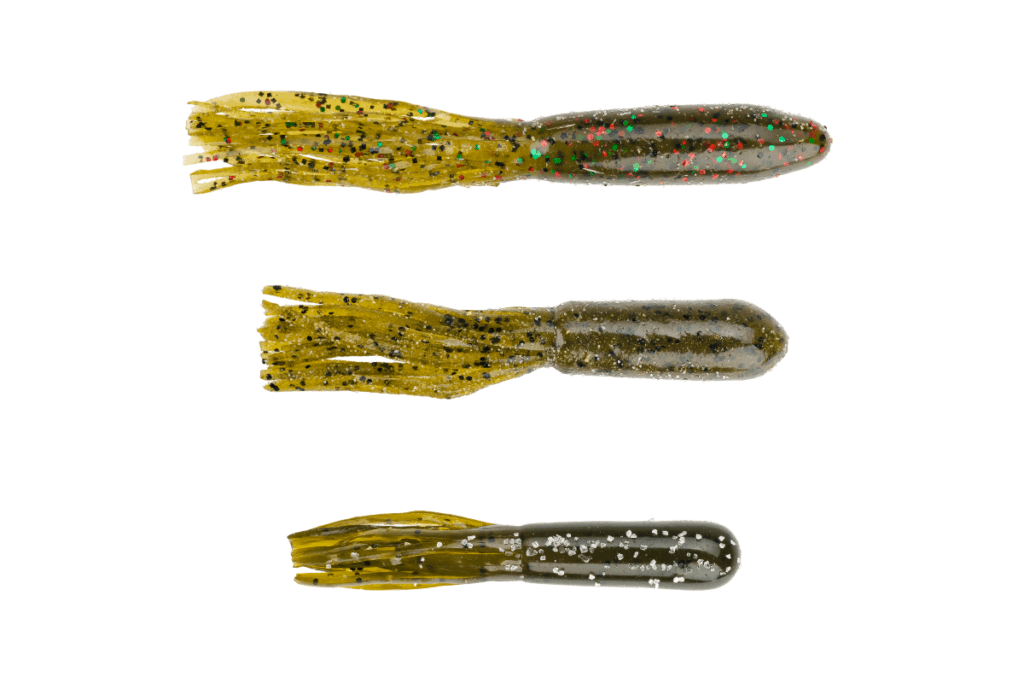
Soft Plastic Tube
This lure has been around a very long time. Bobby Garland knew he was on to something when he first designed the original Gitzit.
Nearly every lure manufacturer now offers some sort of plastic tube.
There are large flipping versions all the way down to smaller finesse models. The plastic tube slides through vegetation with ease both horizontally and vertically making it a workhorse for the weeds.
When working the bottom, I prefer to Texas rig the lure with a pegged worm weight. If I choose to swim it through the vegetation I can either use the same setup or go with an insert tube head.
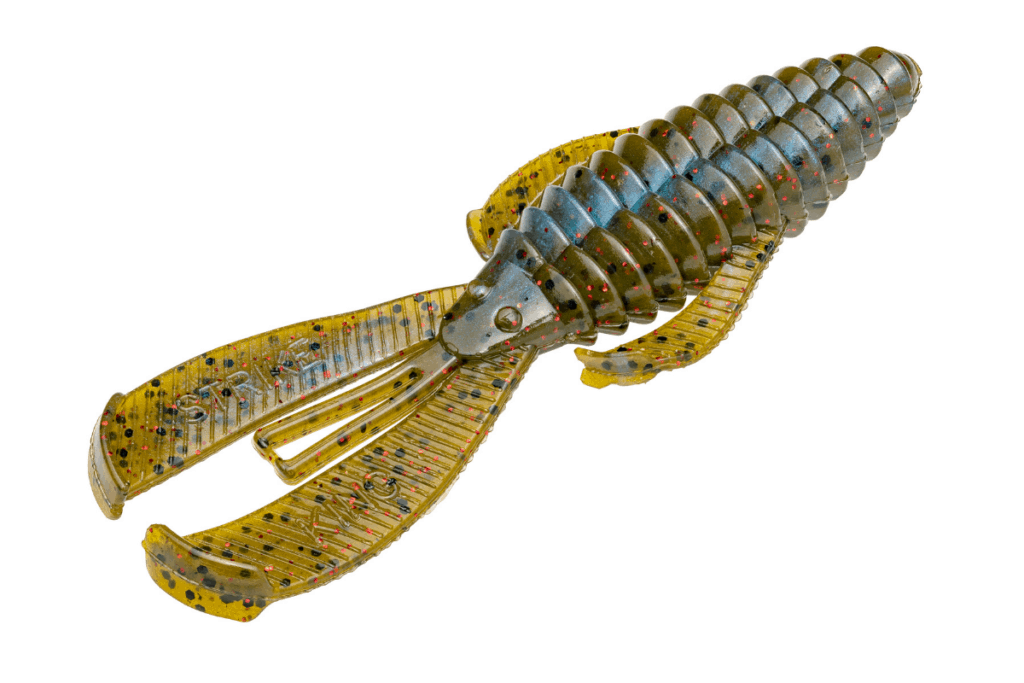
Compact Creature Baits
There are so many options under this heading, but as I mentioned before, I look for a creature bait that is compact and keeps the appendages close to the body.
This design helps the lure to slide through the vegetation with ease, yet still offers a slight vibration signature.
I will keep several models rigged up and swap rods out often until I decipher what the bass are most inclined to chomp on.
Pitching Jigs
A traditional bass jig is an excellent tool for probing the grass.
Matching them with a compact and bulky trailer will help them slip through the strands of vegetation and get to the bottom.
Jigs are great tools for probing those small open areas in the green stuff.
I will keep two versions rigged and ready. I like to have a more finesse model and then a very heavy jig. This offers two different fall rates that present two distinct presentations.
Sometimes the heavy jig pounding into the bottom will trigger strikes. Other times, the lighter model slowly sliding down the grass will draw reaction bites.
Keep mixing it up until you feel the bass commit and take the lure with attitude.
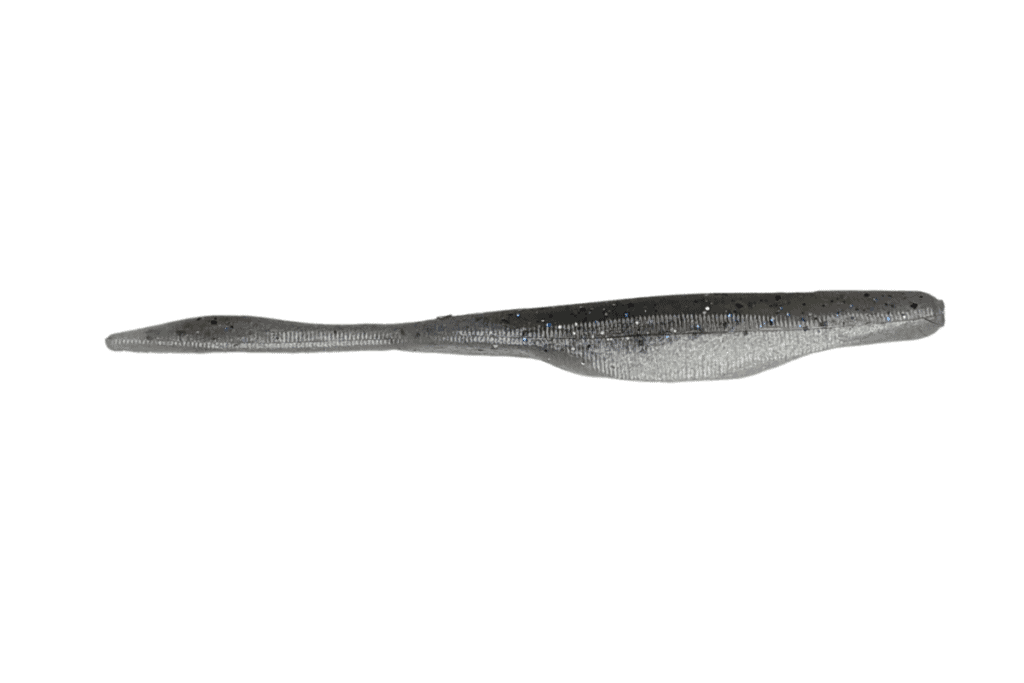
Soft Plastic Jerkbait
When there is a low pressure system and some chop on the water, I prefer to fish the weed beds with a horizontal presentation.
The bass are more likely to be up in the water column during these conditions and chase prey.
A soft plastic jerkbait slithers through the thickest of grass with ease. It can be fished weightless, with a worm weight, or even with a belly weight.
Each of these rigging methods have pros-and-cons depending on how thick the grass is. The goal is to work the bait without getting hung up.
Peg the Weight
When fishing grass beds, it is best to peg the worm weight.
This will keep the soft plastic in contact with the tungsten and ensure that the lure falls to the bottom – not just the weight.
There are multiple soft rubber pegs on the market, or you can even use a toothpick when in a pinch. The rubber pegs are not going to potentially fray your line like a toothpick might.
Lure Color Choice When Bass Fishing Vegetation
When fishing vegetation I almost exclusively stick with green pumpkin.
If I do alter the color, I still focus on matching bluegill the best I can. Heavy vegetation is often swarming with schools of bluegills and the bass will react best to lures that match this forage base.
If the water you fish has an abundance of yellow perch you may wish to add a little chartreuse to the mix.
On sunny days I am more apt to go with watermelon red flake to get those flashes of red to work for me.
Rod, Reel and Line
The majority of my grass fishing rods are going to be a medium heavy power rating with a high speed reel.
The line will be braid with some sort of leader. Often I will stick with a 17lb fluoro leader with anywhere from 50 – 65lb braid.
If the vegetation is emergent and very thick, then I will upgrade to a heavy power rated rod to horse those fish out of the slop and go with straight braid unless there is open, clear water beneath the emergent grass.
A high speed reel allows an angler to make many more casts throughout the day and I feel it is a must-have when fishing the grass.
The Bite
Most often when fishing the weeds, the bite will be a slight thump.
Set the hook immediately with a solid backward motion of the rod. The fish will want to bury up in the cover so keep winching it towards the boat. The line, rod, and reel will be up to the task.
If you sense that the bass runs with the lure, that is an excellent indicator that there are multiple fish down there. You may have just located a sizable school holding in one tight area.
I have fished grass beds on the Mississippi River that hold an incredible number of fish in a very small space. Pitch back in there and you may catch several in a row.
Final Thoughts
By focusing on vegetation that adjoins deeper water, you will be keying in on high-percentage areas.
Using the lures discussed here will keep the presentations free of snags and efficiently probe all parts of the weedbed.
Fishing the grass is a numbers game. Get as many pitches in as possible and it is just a matter of time before you hook up with a good one.
Tight lines. Be safe and make sure to encourage someone today. You never know how you may change their life forever.
Isaiah 6:8

